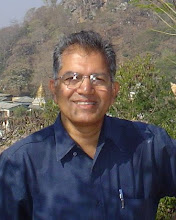A question about Girard: is he doing metaphysics or phenomenology? If he is doing metaphysics (people talks about Girard's 'anthropology', for example), is he placing violence and its roots in mimetic desire in the very nature of being human? And what might that mean?
When we do metaphysics, are we discussing 'pure human nature' or 'human beings as they actually are'? The latter would mean that the data would include grace and redemption, if these obtain.
Might it not Lonergan's method of approximation be useful here? First approximation: the pure line of progress ('human nature'); second approximation: distortion by sin, mimetic desire, violence; third approximation: human beings as they actually are - including the factor of redemption.
Even so: would Girard place mimetic desire in the first approximation or in the second? But perhaps this is a question that might not arise on his approach.
When we do metaphysics, are we discussing 'pure human nature' or 'human beings as they actually are'? The latter would mean that the data would include grace and redemption, if these obtain.
Might it not Lonergan's method of approximation be useful here? First approximation: the pure line of progress ('human nature'); second approximation: distortion by sin, mimetic desire, violence; third approximation: human beings as they actually are - including the factor of redemption.
Even so: would Girard place mimetic desire in the first approximation or in the second? But perhaps this is a question that might not arise on his approach.
